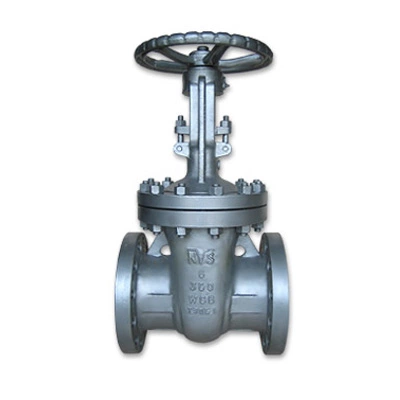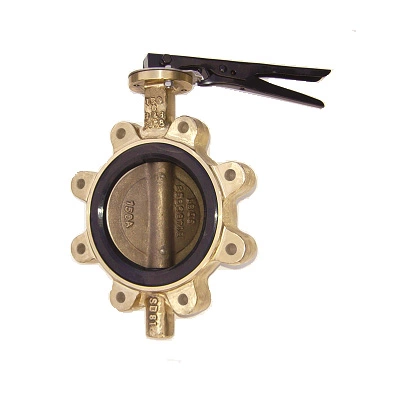The difference between a butterfly valve and a gate valve
According to the functions and uses of gate valves and butterfly valves, a gate valve has small flow resistance and good sealing performance. Because the disc of the gate valve is perpendicular to the flow direction of the medium, if the gate valve disc is not in place, the medium will sluice the disc and make it vibrate. This will easily damage the sealing performance of the gate valve.
A butterfly valve, also known as a flap valve, is a regulating valve with a simple structure that can be used for the switching control of the medium in a low-pressure pipeline. The closing mechanism of a butterfly valve is a disk-shaped butterfly plate that rotates around the valve shaft to achieve the purpose of opening and closing, or adjusting. Butterfly valves are often used to control the flow of various types of media, such as air, water, steam, various corrosive media, mud, oil, liquid metals, and radioactive media. Their main functions are cutting off and throttling.
The butterfly disc-shaped plate is driven by the valve stem. If it is rotated through 90-degree, it can be opened and closed once. By changing the deflection angle of the disc, the flow of the medium can be controlled. Considering about its working conditions and media, a butterfly valve is suitable for conveying various corrosive and non-corrosive fluids in water supply and drainage, engineering systems, such as furnace gas, natural gas, liquefied petroleum gas, urban coal gas, high and low temperature air, etc.
A gate valve is a shutter for controlling opening and closing. The movement direction of the gate is perpendicular to the direction of the fluid, so the gate valve can only be fully open or fully closed. A flexible disc can improve the manufacturability of the gate valve, and compensate for the deviation of the sealing surface during the machining process.
When the gate valve is closed, the sealing surface can be sealed only by the medium pressure, that is, the sealing surface of the shutter is pressed against the valve seat of the other side only by the medium pressure to ensure the leakproofness of the sealing surface, this is called self-sealing. Most of the gate valves are forced to seal -- when the valve is closed, the external force is forced to press the gate to the valve seat to ensure the imperviousness of the sealing surface.
The gate of the gate valve moves linearly with the valve stem. Usually, trapezoidal threads are provided on the lifting rod, and the rotary motion is changed into a linear motion by the nuts at the top end of the valve and the guide slot on the valve body, namely, the operating torque is changed to the operating thrust. After the valve is opened, when the lifting height of the shutter is equal to the diameter of the valve, the passage of the fluid is completely unblocked, but this position cannot be monitored during operation. In actual use, the top end of the valve stem is used as a mark, i.e., the position where the valve is opened is its fully open position.
A butterfly valve, also known as a flap valve, is a regulating valve with a simple structure that can be used for the switching control of the medium in a low-pressure pipeline. The closing mechanism of a butterfly valve is a disk-shaped butterfly plate that rotates around the valve shaft to achieve the purpose of opening and closing, or adjusting. Butterfly valves are often used to control the flow of various types of media, such as air, water, steam, various corrosive media, mud, oil, liquid metals, and radioactive media. Their main functions are cutting off and throttling.
The butterfly disc-shaped plate is driven by the valve stem. If it is rotated through 90-degree, it can be opened and closed once. By changing the deflection angle of the disc, the flow of the medium can be controlled. Considering about its working conditions and media, a butterfly valve is suitable for conveying various corrosive and non-corrosive fluids in water supply and drainage, engineering systems, such as furnace gas, natural gas, liquefied petroleum gas, urban coal gas, high and low temperature air, etc.
A gate valve is a shutter for controlling opening and closing. The movement direction of the gate is perpendicular to the direction of the fluid, so the gate valve can only be fully open or fully closed. A flexible disc can improve the manufacturability of the gate valve, and compensate for the deviation of the sealing surface during the machining process.
When the gate valve is closed, the sealing surface can be sealed only by the medium pressure, that is, the sealing surface of the shutter is pressed against the valve seat of the other side only by the medium pressure to ensure the leakproofness of the sealing surface, this is called self-sealing. Most of the gate valves are forced to seal -- when the valve is closed, the external force is forced to press the gate to the valve seat to ensure the imperviousness of the sealing surface.
The gate of the gate valve moves linearly with the valve stem. Usually, trapezoidal threads are provided on the lifting rod, and the rotary motion is changed into a linear motion by the nuts at the top end of the valve and the guide slot on the valve body, namely, the operating torque is changed to the operating thrust. After the valve is opened, when the lifting height of the shutter is equal to the diameter of the valve, the passage of the fluid is completely unblocked, but this position cannot be monitored during operation. In actual use, the top end of the valve stem is used as a mark, i.e., the position where the valve is opened is its fully open position.
 |
 |

